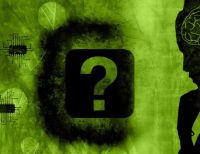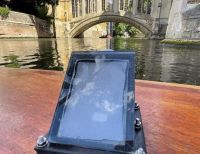In an attempt perhaps to boost his income, Siberch also printed a number of more popular titles, including a Latin grammar compiled by William Lily, first master of St Paul’s School, London, with revisions by Erasmus, and the first edition of the first eclogue, of Alexander Barclay, perhaps written while a monk at Ely.
Page of the first eclogue of Alexander Barclay recovered from the binding of a later work.
Page of the first eclogue of Alexander Barclay recovered from the binding of a later work.
He also risked a bootleg edition of Erasmus’s guide to letter-writing, concluding with a template for a “iocosa epistola”. Erasmus was not amused; he had an agreement for prior publication with Johan Froben of Basel.
In the first authorised edition he complains: “There is nothing a printer would be ashamed to do”. Siberch, however, was forgiven. A few years later Erasmus included him among the “old companions” to whom he sent Christmas greetings.
However, Siberch was a novice printer. As far as we know he printed nothing either before or after his time in Cambridge. In a preface he appeals: “Forgive me, dear reader, considering that I am an inexperienced beginner … I freely confess that in printing this book I have made many mistakes.”
There are two misprints on the title-page, pictured, of what may be a proof copy of his edition of a sermon by Baldwin, a twelfth-century archbishop of Canterbury.
In the deluxe copy of his Galen, printed on vellum, which Thomas Linacre evidently presented to Henry VIII, the pages of the final section appear in the wrong order, having been incorrectly arranged on the press.
Perhaps translator and printer hoped the King would not read to the end. Siberch also had a limited range of type and printing blocks. A woodcut Adoration of the Shepherds (seen below) appears incongruously at the end of the first impression of Linacre’s Galen. Nor did he possess a complete alphabet of decorated capitals; an inverted G had to serve for Q (bottom image).
The printer's mark, used in the colophon at the end of several of Siberch's printed works. The text translates as: 'Printed in the famous academy at Cambridge by John Siberch, 1521.'
The printer's mark, used in the colophon at the end of several of Siberch's printed works. The text translates as: 'Printed in the famous academy at Cambridge by John Siberch, 1521.'
















